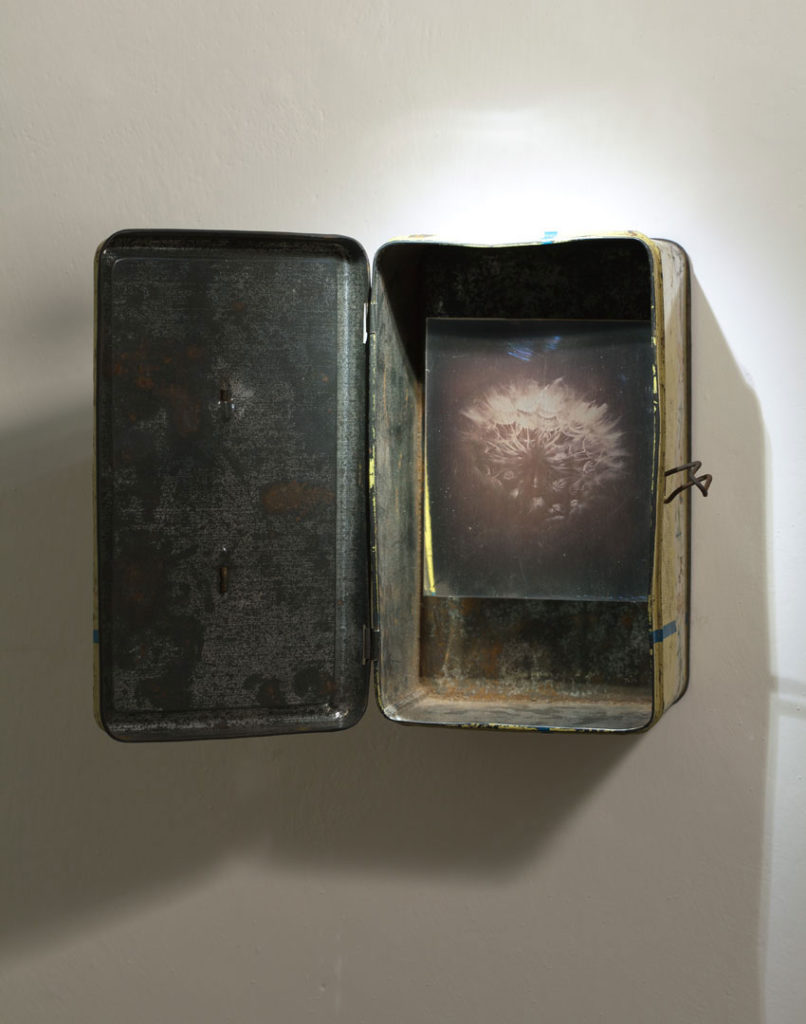
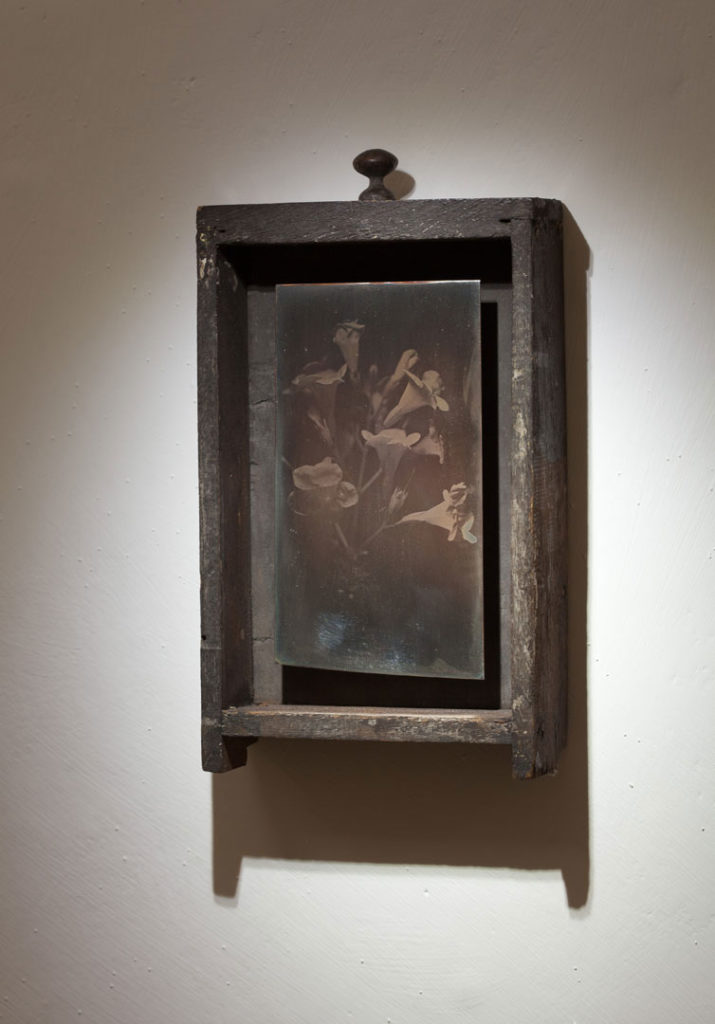
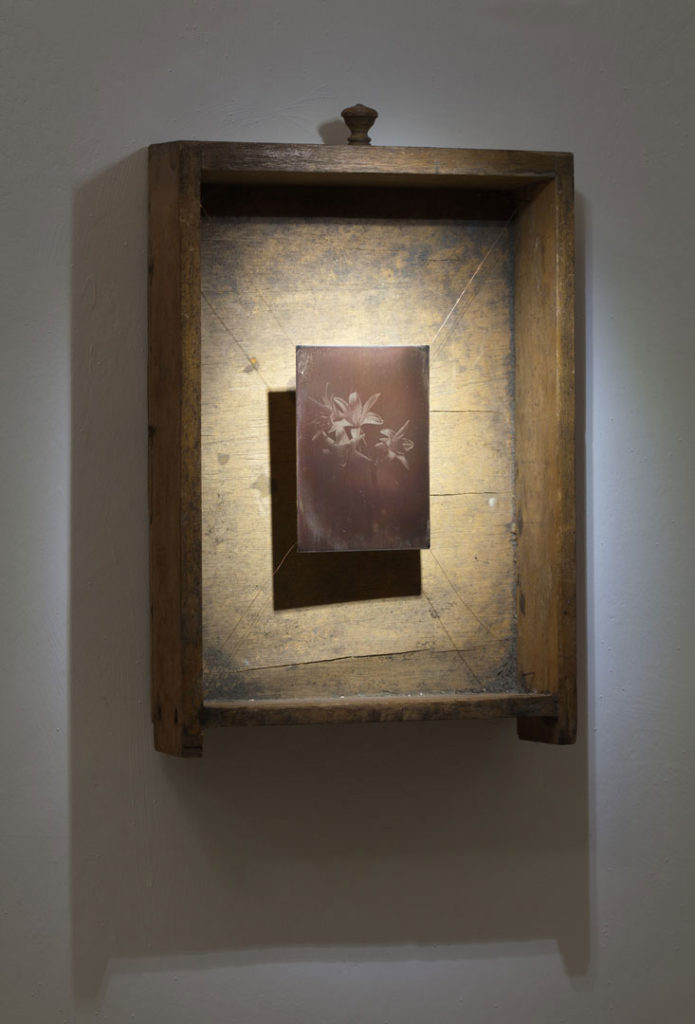
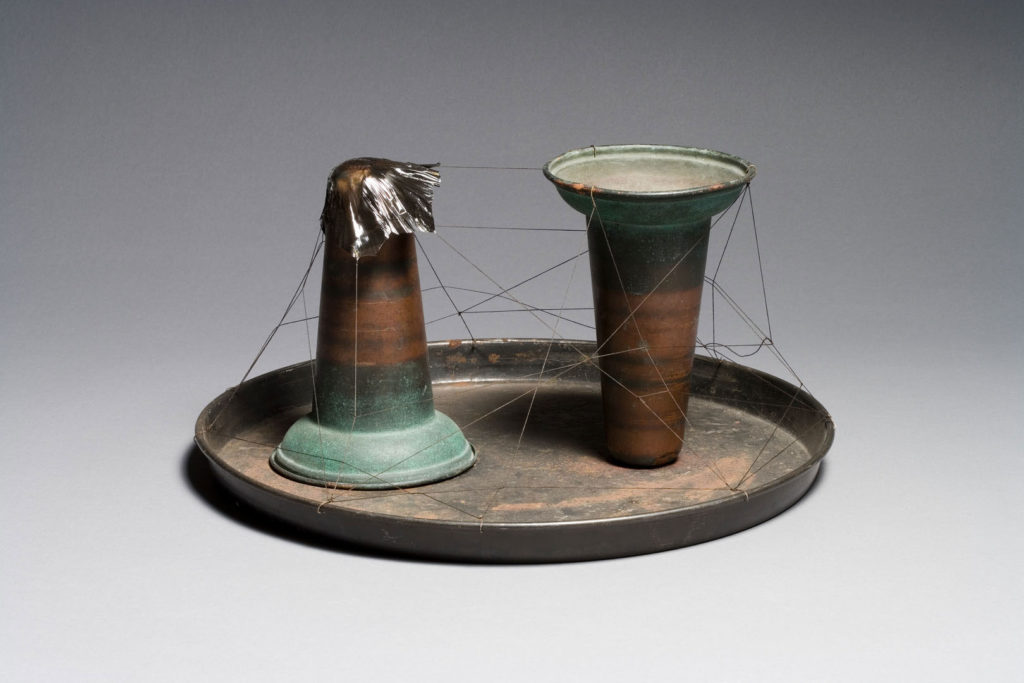
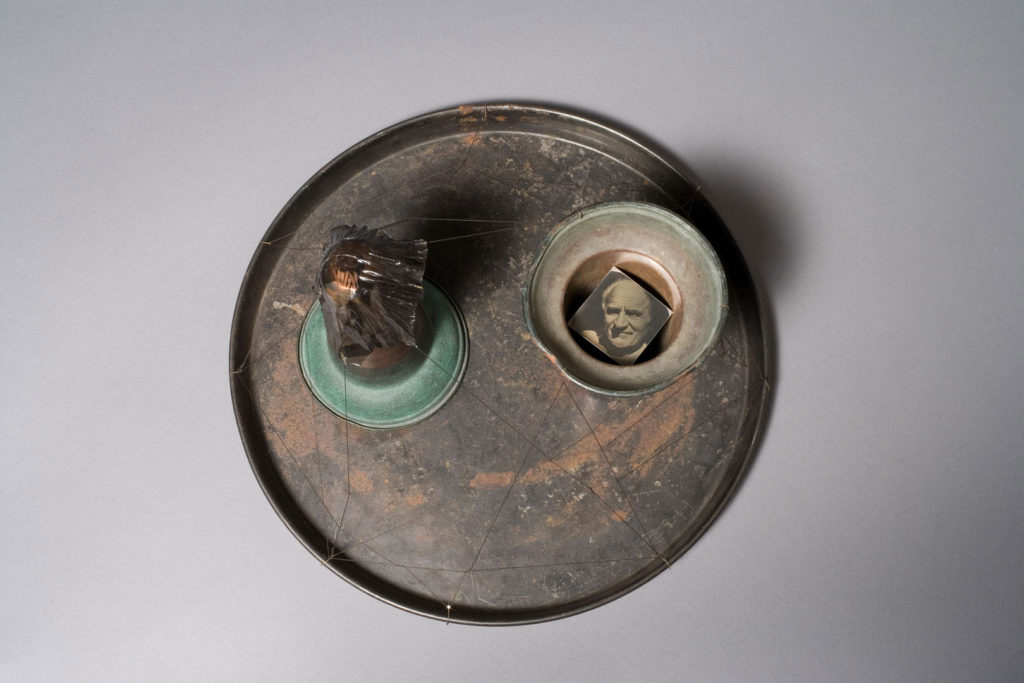
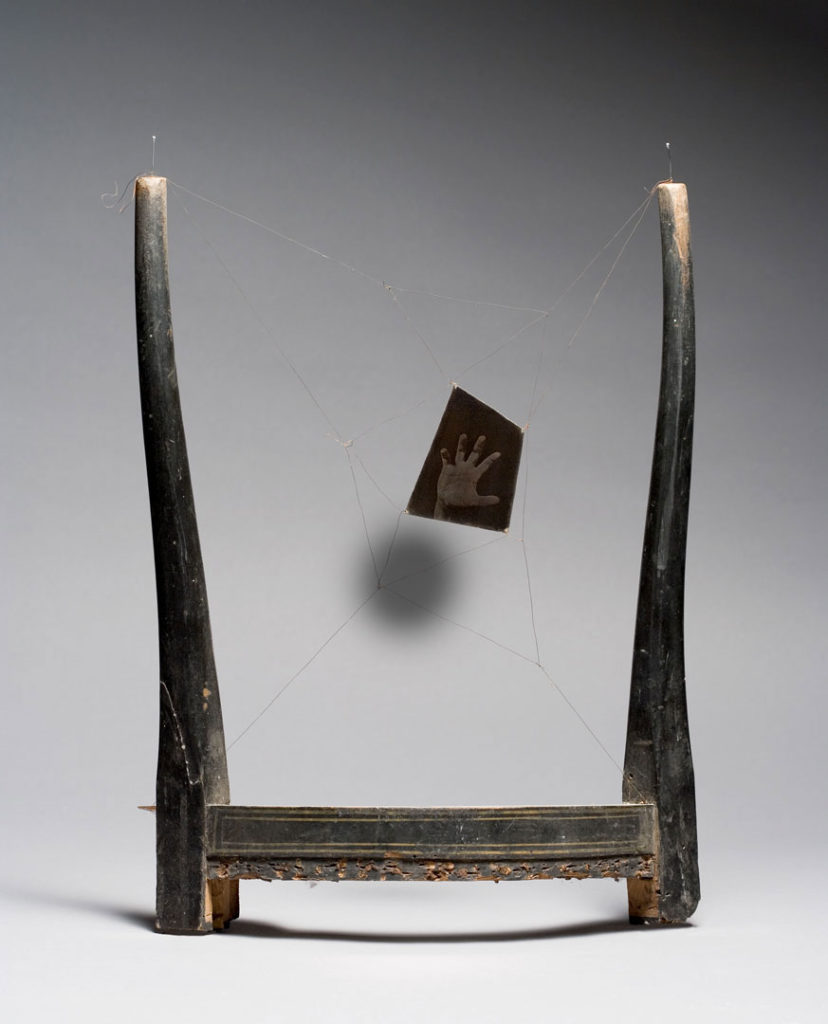
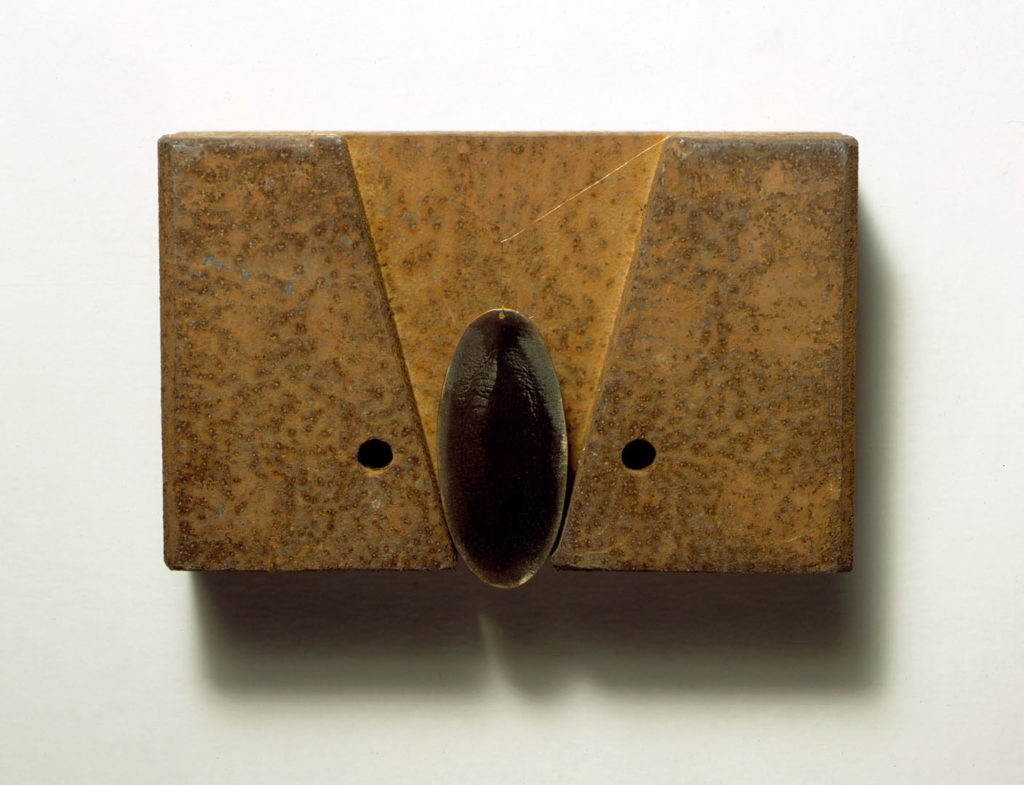
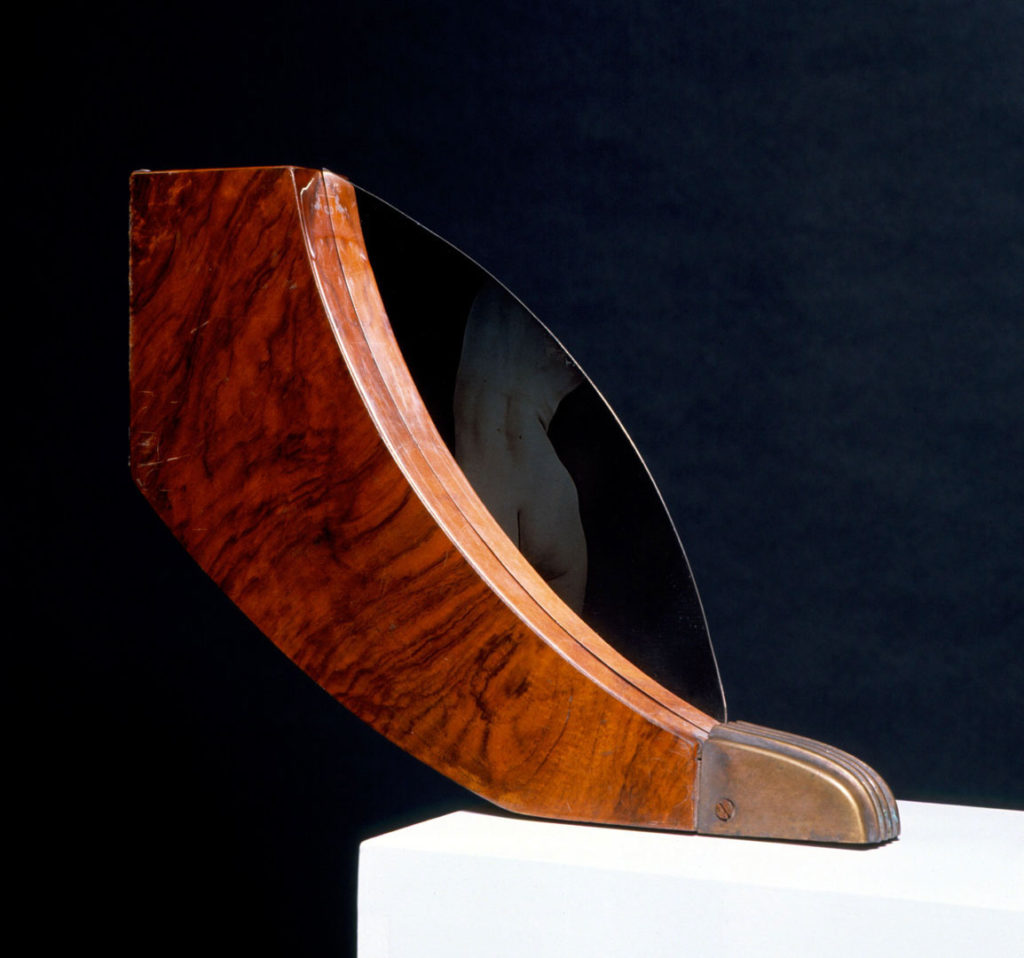
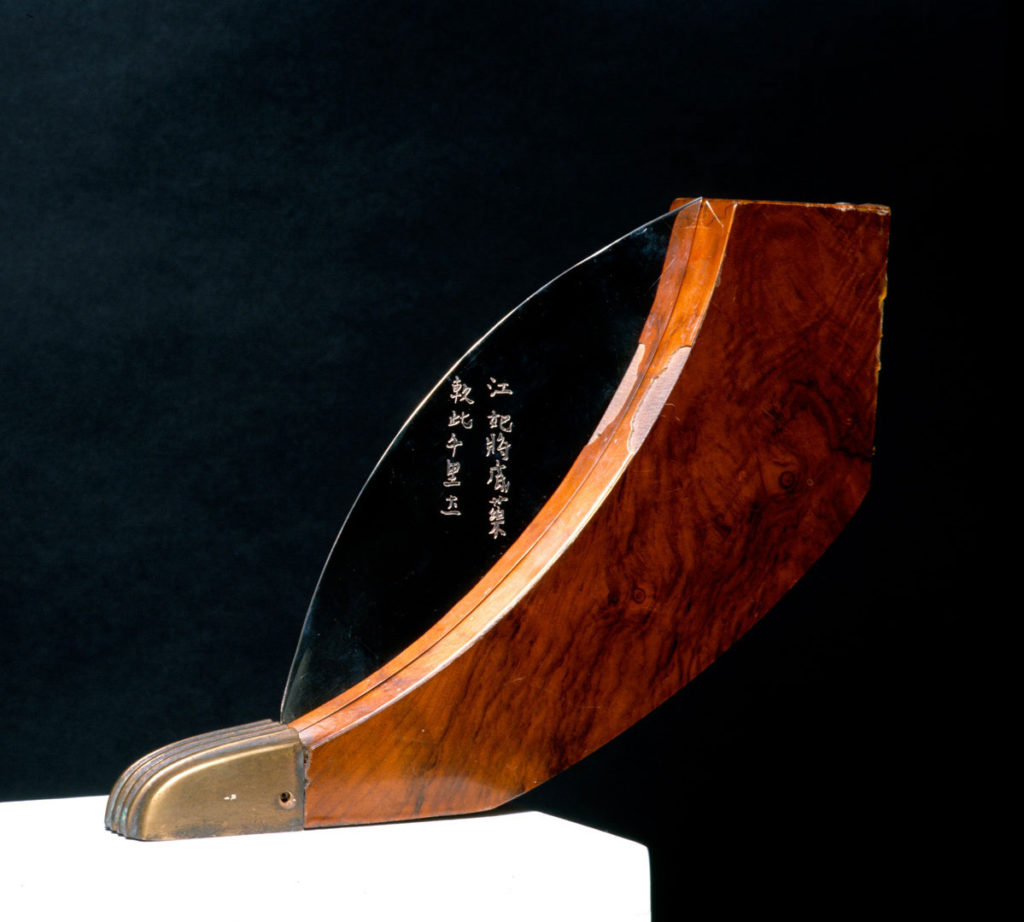
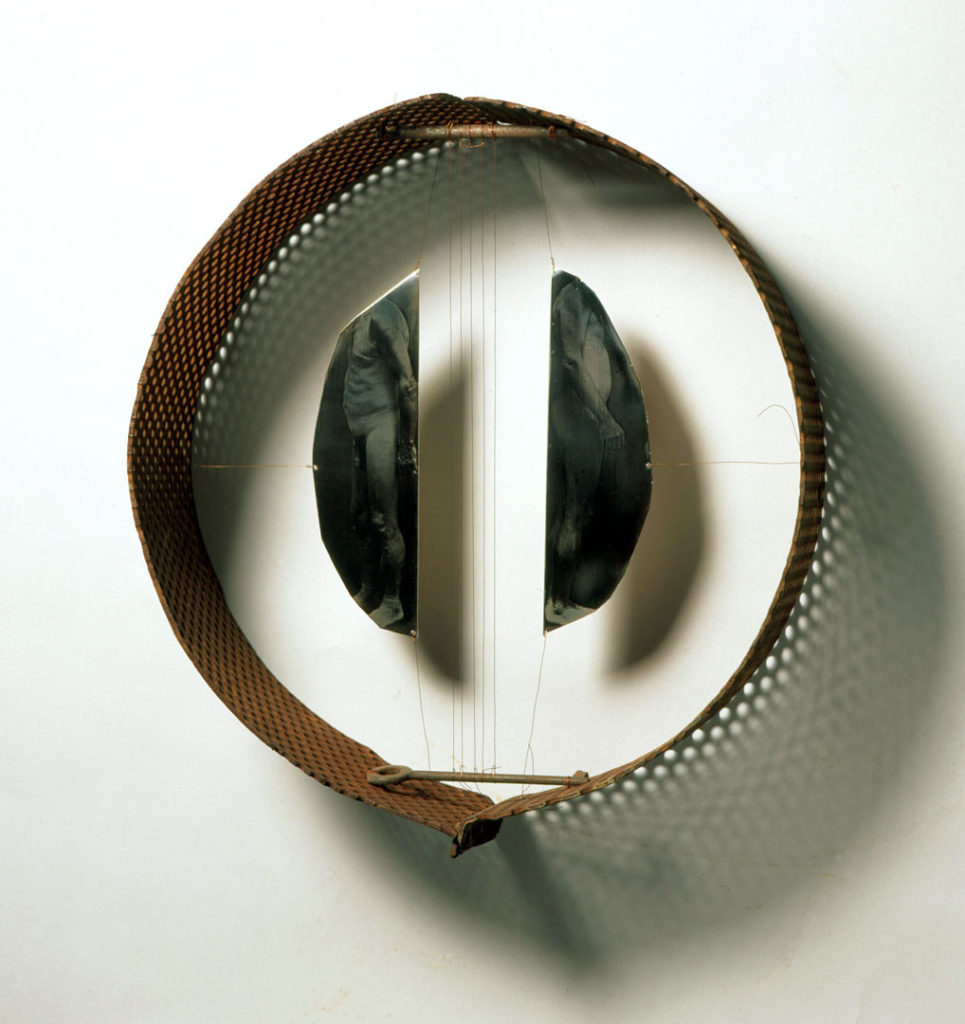
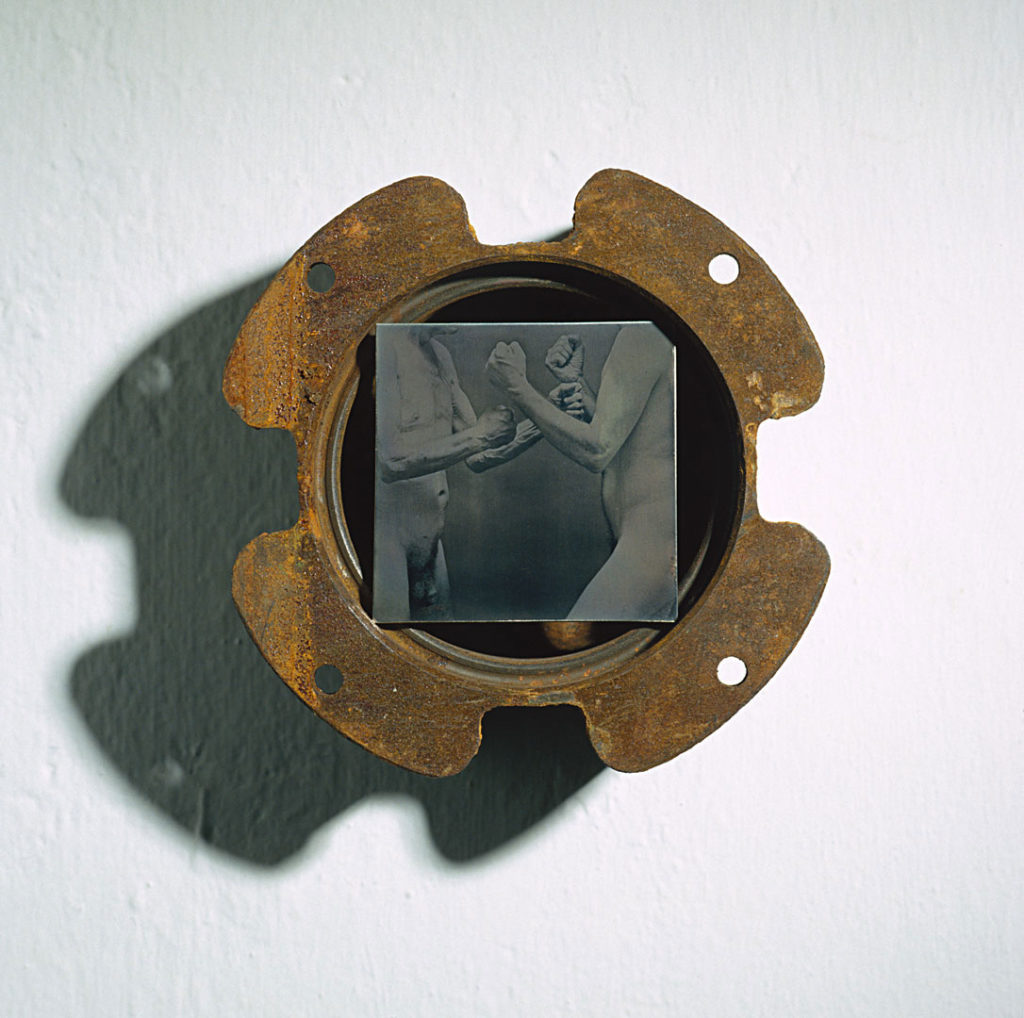
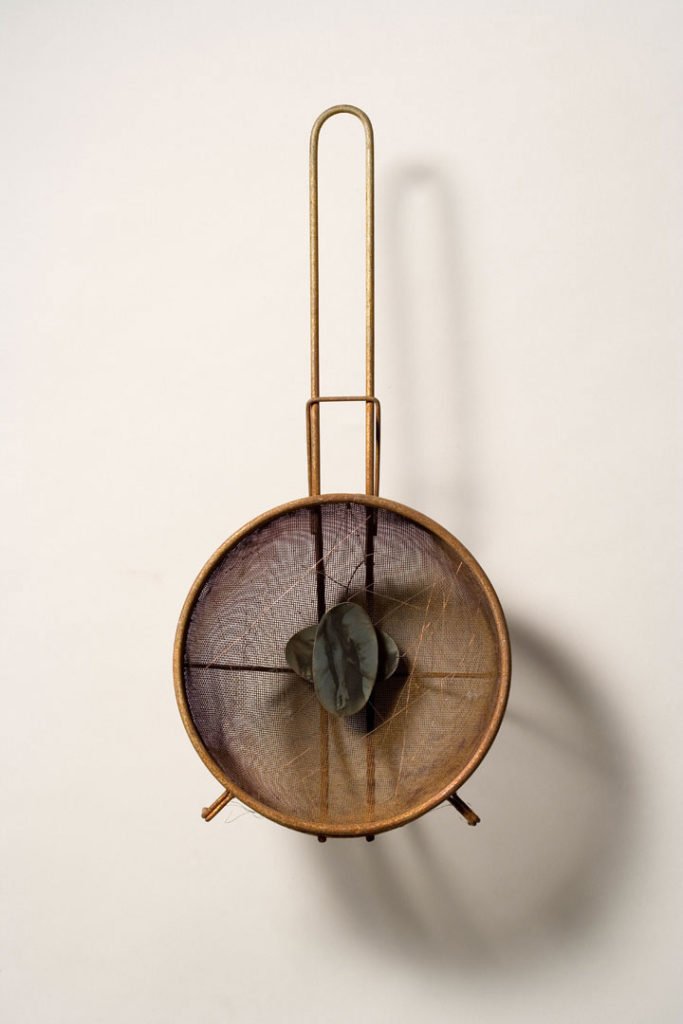
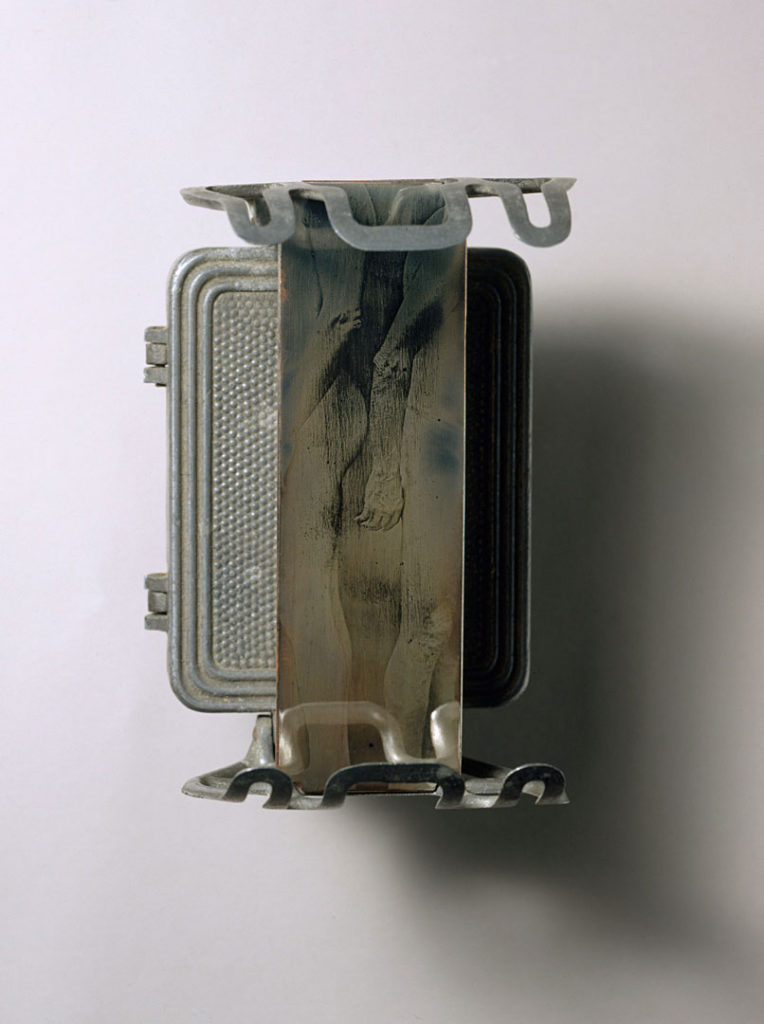
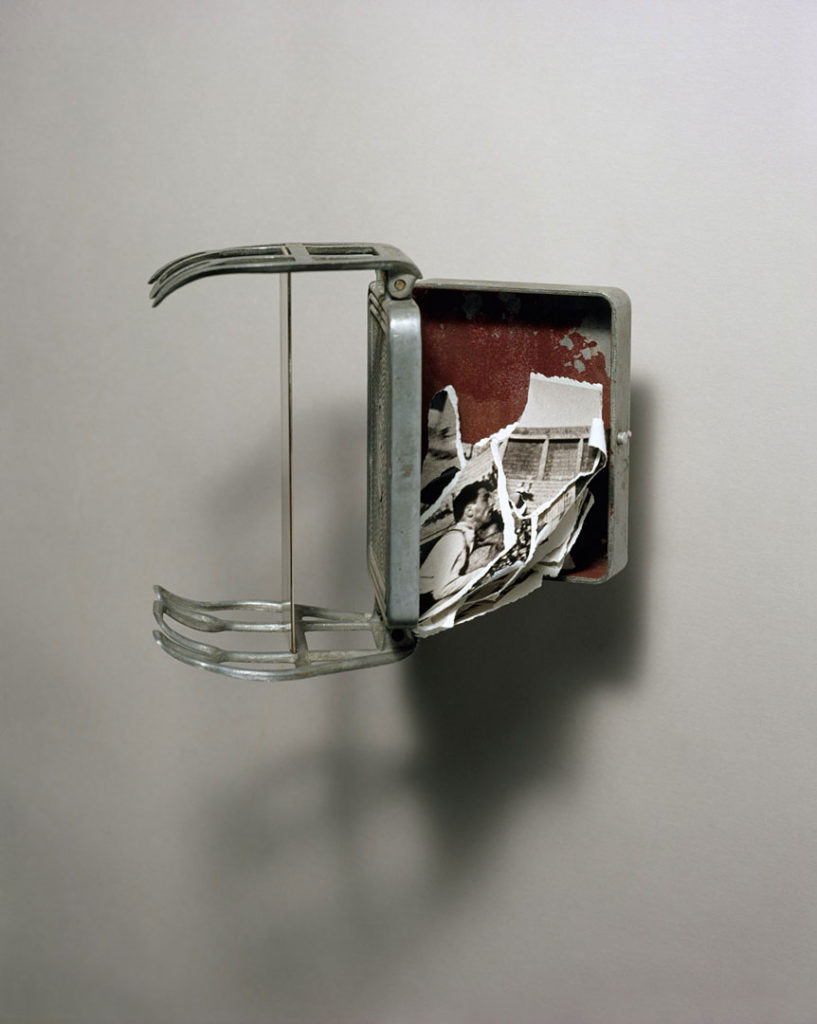
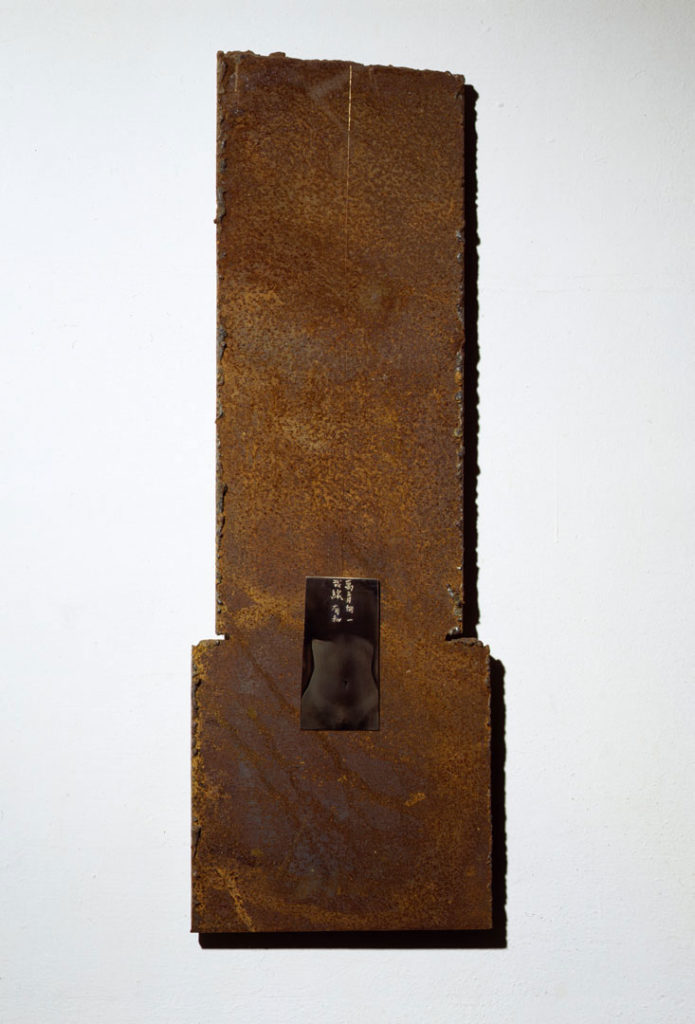
Dagherrotipi
Ho iniziato ad usare i dagherrotipi costruendo i cassetti della memoria, utilizzando la proprietà straordinaria e addirittura mitica di questo procedimento, che permette di rispecchiarsi in brandelli di memorie e sfilacciamenti di tempi favolosi. Un’astrazione sospesa che dialoga con oggetti concreti, segnati dai dolori del tempo.
Un gruppo importante riguarda mio padre e me: poco prima che morisse ho messo in mano a mia madre una macchina fotografica e le ho fatto fotografare noi due, nudi come vermi, che scherzavamo ed esibivamo la continuità del corredo genetico. Povera mammetta, era un poco perplessa. Ma queste immagini mi sono tornate utilissime quando ho dovuto fare i conti finali con il rapporto con mio padre.
Ne “Il pozzo” ho utilizzato due contenitori di rame trovati da un rigattiere, che ho poi scoperto essere due vasi cimiteriali; con uno ho costruito un equilibrio precario in cui inserire un dagherrotipo di mio padre, ormai solo un simulacro evaporato di sé stesso (come le gocce di mercurio che ne formano l’immagine); sull’altro elemento ben stabile ho steso un’immagine mia, ma irriconoscibile se non a me stesso. Il tutto legato da fili da sartoria agganciati ad ami da pesca, rete che ci legava in territori da zona franca, terre ambigue ed anomale da cui sono banditi gli scontri diretti, altrimenti troppo cruenti e dagli esiti irrimediabili.
La trousse è un delizioso oggetto fine anni quaranta / inizio anni cinquanta, che sostanzialmente è un beauty da bicicletta della mia madrina, emigrata in Svizzera, che si era fatta fare una bici tutta cromata a Torino, poi mandata a Neuchâtel con infinite traversie doganali. Nelle graffe a molla ho inserito un ritratto della serie con mio padre, e dentro lo scatolino apribile, rivestito di velluto rosso e dotato di uno specchio per un ritocco ai capelli scompigliati dalla corsa, una foto di questo padre assente per troppi anni, in una parata al volo (era portiere di calcio): una fotografia tutta spezzettata, vendetta postuma contro un mestiere che mi aveva tenuto il padre lontano fino all’età di otto anni.
Daguerrotypes
I discovered the value and meaning of daguerrotypes while creating “memory drawers”: an extraordinary and nearly mythical procedure wich allows us to mirror ourselves into remembrance and at the same time into the unravelling of fabolous gone times. It’s a sort of suspended abstraction, interacting with actual objects, marked by lifetime sufferings.
One of the most relevant groups I collected has to do with my father and myself. I gave my mother a camera (my father was on the verge of dying) and I asked her to take pictures of the two of us, completely naked, joking with each other and showing the continuity of our genethic heritage. Howewer, those very images proved to be very useful when eventually I had to come to terms with my relationship with my father.
In what I defined “The pit” I used two copper containers found at a second-hand dealer’s, which turned out to be two graveyard urns. In the first one I modelled an unstable balance containing my father’s daguerrotype, by then an evaporated image of what he had been, as the mercury drops gave shape to his figure. On the second, perfectly static container I spread my image, nobody could figure out it was me, but myself. Sartorial threads would unite the whole work fastened to fish hooks, giving shape to a unique net tying each other in a free port. It was and is a highly ambiguous and peculiar area from which any direct clash (too painful and irretrivable outcomes) would be forbidden.